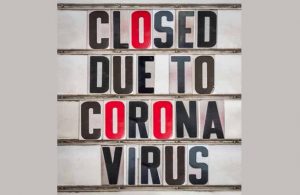What We’ve Learned About Keeping Essential Businesses Operating During a Pandemic

Coronavirus COVID-19 has scared everyone and changed the way businesses operate — including sick leave policies. The coronavirus, and COVID-19, the disease caused by the virus, can be easily transmitted by people who often are just mildly ill or not showing any symptoms. The virus originated in the Huanan seafood wholesale market in Wuhan, China and has spread across the globe.
The World Health Organization reported that despite the fact that COVID- 19 has a lower fatality rate (those who die versus those who survive) than the 2003 outbreak of severe acute respiratory syndrome (SARS) and the Middle East respiratory syndrome (MERS), Covid-19 has resulted in more deaths than both diseases combined. Signs of infection include fever and respiratory symptoms, including cough, shortness of breath and other breathing issues.
The virus can cause pneumonia, acute respiratory syn-drome and organ failure. Those who are in poor health are most at risk. Standard treatments, such as antiviral drugs, do not work and it will probably take more than a year to develop a vaccine. The effect on many businesses has been profound. According to the United Nations, the disease will likely cost the global economy $1 trillion in 2020. One of the best ways to control the spread of a new disease is through “social distancing”. A study by the National Institutes of Health Fogarty International Center and Arizona State University found that nationwide 18-day school closures in Mexico during the 2009 H1N1 influenza pandemic contributed to a 29 percent to 37 percent reduction in flu transmission rates.
Cities and states have been issuing “stay at home” and “shelter in place” orders to slow the spread of the disease. Some businesses, however, have been designated as essential and allowed to stay open. Essential businesses range from health care and law enforcement services to grocery stores and infrastructure support. If your business is one of the businesses allowed to continue operation, here are some sick leave policy rules and regulations you should be aware of during this pandemic.
Sick leave allows employees to take paid time off for work when they are ill. However, many employees — particularly those who work hourly — are not covered by a paid sick leave policy. There is no federal requirement for employers to provide paid sick leave, even in the event of a natural disaster, although some states and cities — such as California, Michigan, New Jersey, Washington, San Francisco and New York City — mandate paid sick leave including part-time employees. However, the Centers for Disease Control and Prevention recommends all employers develop more flexible and generous sick leave policies and encourage employees who are sick or exhibiting symptoms to stay at home.
Keep in mind that some employees may be entitled to unpaid leave under the federal Family and Medical Leave Act if they become seriously ill. Employees also could be eligible for short-term disability benefits depending on their workplace insurance or their state’s requirements. If the illness is work-related, the employee may be entitled to workers’ compensation insurance. You might want to consider requiring employees who have been traveling abroad to stay home for the coronavirus’s incubation period, which is about 14 days. If you decide to require this, you will need to decide whether you will pay these employees, require they take sick leave or allow them to work from home.
You can legally ask an employee who just visited an affected area to stay home for two weeks — the COVID-19 incubation period. For instance, Northwell Health, the largest health system in New York, recently asked 16 people to take a two-week paid furlough after visiting China. Although employers are not required to pay employees who are furloughed due to virus concerns, paying employees would encourage them to step forward and share whether they think they’ve been exposed to the virus. After
the incubation period passes, employers can require a medical exam to determine whether that person is well enough to return to work.